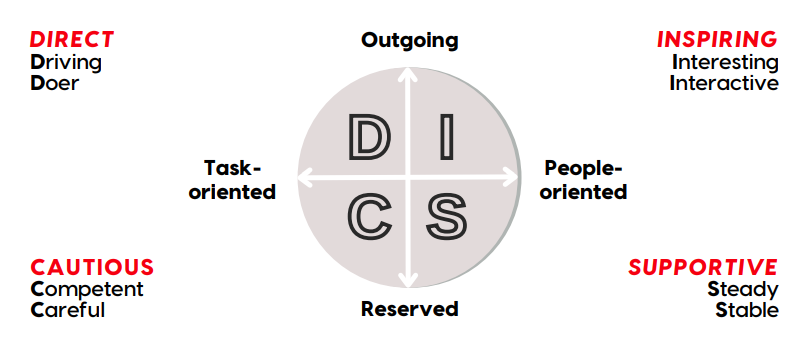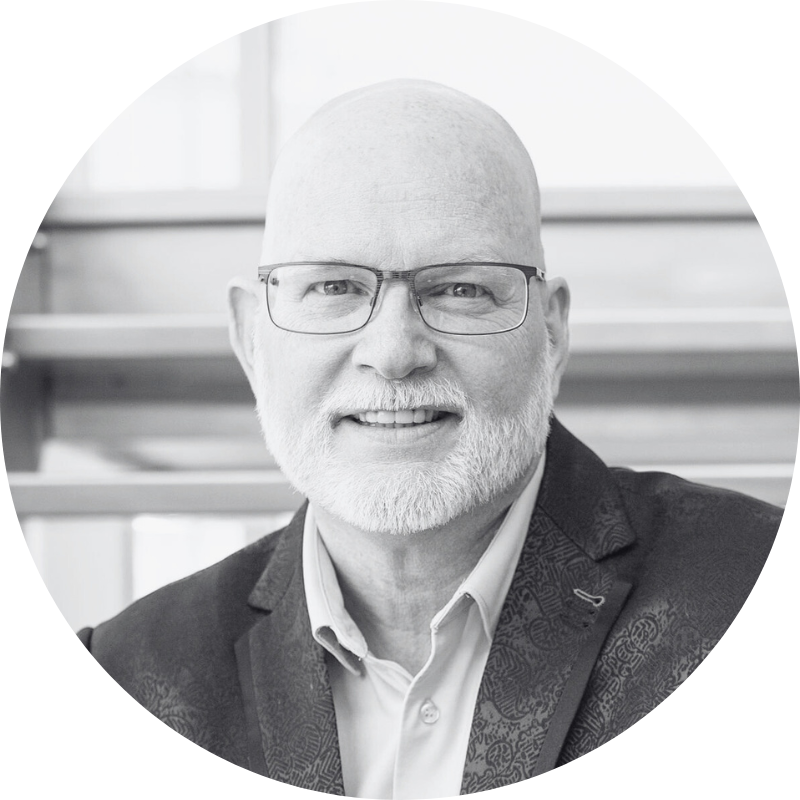When it comes to understanding ourselves and the people around us, personality frameworks have become a valuable tool across many industries. Whether in leadership, education, coaching, or even personal relationships, knowing how people behave, communicate, and make decisions can make a real difference.
There are many popular tools available, each offering its own way of helping people navigate human behaviour. You might have heard of names like Myers-Briggs, the Big Five, or the Enneagram. Of course, among them, one framework that continues to stand out for its practical approach is DISC. (Curious how I got into DISC? I share the full story in this blog.)
But if you’ve ever wondered what DISC is and how it compares to other assessments, you are in the right place.
In this blog, we will explore some of the most well-known personality frameworks, take a simple look at what makes each one unique, and help you figure out which might fit your needs best.
The Value of Personality Frameworks or Assessments
We all have different ways of thinking, working, and relating to others. That’s why personality frameworks (also known as personality assessments or psychometric assessments, or even personality tests) have become such a useful resource because they help bring a little more clarity to our differences.
In workplaces, they can improve collaboration and reduce misunderstandings. (Read our blog here to discover the role DISC plays in transforming your organization.) In coaching and leadership, they offer insights into how people process feedback, handle stress, or take initiative. (If you’re curious how DISC can help in your role as a coach or leader, I shared more in this blog.) Even in everyday situations, these tools can help us better understand why someone might act or respond the way they do.
The good news is, there isn’t one right choice for everyone. Each framework is built with a different purpose in mind. Some are designed for deep personal discovery. Others are geared towards improving team communication or identifying strengths. So the question isn’t which one is best overall, it’s which one fits best with what you’re trying to learn or achieve.
Now that we’ve set the stage, let’s look at four of the most recognized personality frameworks today and see how they compare.
What is DISC?

DISC (which you can also learn more about here) is a behavioural framework that helps people understand how they respond to challenges, influence others, handle routines, and approach rules or systems. It focuses on observable behaviour, making it a practical tool for improving communication, strengthening relationships, and building more effective teams.
The model traces its roots back to the 1920s when psychologist William Moulton Marston introduced it as part of his work on human emotion and behaviour. While Marston never created an assessment tool himself, his theory was later developed into the DISC assessment as we know it today, one that’s now widely used in coaching, leadership, team building, and personal development.
Rather than labelling people by fixed traits, taking a DISC assessment (which I talk more about here) offers insight into four core behavioural personas:
- Direct (D): Action-oriented and results-focused
- Inspiring (I): People-driven and expressive
- Supportive (S): Thoughtful, steady, and dependable
- Cautious (C): Detail-oriented and analytical
If you’ve been wondering what DISC is and why so many professionals use it, it comes down to this: it brings immediate awareness to how people behave in real-life settings, without needing deep psychological interpretation. That makes it especially valuable in environments where clarity, collaboration, and action matter.
Focus: Day-to-day behaviour and how individuals communicate and respond in different situations.
Best for: Coaches, leaders, teams, HR professionals, and anyone looking to improve interpersonal dynamics in the workplace or at home.
Strength: Clear, easy to apply, and versatile across many industries and roles.
Consider it if: You want a practical framework that helps and assists people work better together, adapt their communication styles, and navigate real-world interactions more effectively.
What is the MBTI (Myers-Briggs Type Indicator)?

MBTI, or the Myers-Briggs Type Indicator, is one of the most well-known personality frameworks in the world. According to The Myers-Briggs Company, the framework was developed in the 1940s by Isabel Briggs Myers and her mother Katharine Cook Briggs, inspired by the work of Swiss psychiatrist Carl Jung. Their goal was to make Jung’s theories about psychological preferences accessible and practical for everyday use.
The framework is built around four pairs of preferences that reflect how people take in information, make decisions, and engage with the world:
Extraversion (E) vs. Introversion (I)
Sensing (S) vs. Intuition (N)
Thinking (T) vs. Feeling (F)
Judging (J) vs. Perceiving (P)
By combining one preference from each pair, MBTI identifies 16 unique personality profiles. Each profile comes with its strengths, communication patterns, and ways of navigating life and work.
The MBTI is widely used in coaching, leadership development, and team workshops, though some may find it more theoretical compared to action-based tools like DISC. For those looking to explore their inner motivations and thinking preferences, it can be an insightful starting point.
Focus: Inner preferences, mental processing styles, and how people relate to the world around them.
Best for: Individuals exploring personal growth, career direction, or improving their understanding of others at a deeper cognitive level.
Strength: Offers detailed insights into how people think, feel, and decide – helping with self-reflection and long-term development.
Consider it if: You’re interested in a deeper understanding of personality and how thought patterns shape behaviour, especially in areas like career planning, conflict resolution, or personal awareness.
What is the Big Five (Five Factor Model)?

The Big Five, also known as the Five Factor Model, is a personality framework grounded in decades of psychological research. Unlike some models that focus on behaviour or preferences, the Big Five looks at five broad traits that show up consistently in how people think, feel, and interact with others.
These five traits are:
- Openness: Creativity, curiosity, and openness to new experiences
- Conscientiousness: Organization, dependability, and a sense of responsibility
- Extraversion: Sociability, assertiveness, and energy in social situations
- Agreeableness: Compassion, cooperation, and concern for others
- Neuroticism: Emotional sensitivity and the tendency to experience stress or anxiety
The model was developed through years of academic research and factor analysis (as you’ll see in this study), making it one of the most scientifically validated frameworks available. Rather than categorizing people into types, it measures each trait on a spectrum, recognizing that personalities exist in shades rather than fixed boxes.
While the Big Five offers depth and credibility, it tends to be more analytical and less focused on real-time behaviour. That makes it powerful for certain environments but possibly less accessible for teams or individuals looking for everyday tools they can act on quickly.
Focus: Core personality traits that influence thinking, emotion, and social interaction.
Best for: Psychologists, researchers, and professionals involved in hiring, profiling, or large-scale behavioural studies.
Strength: Strong scientific foundation with high reliability and consistent results across different cultures.
Consider it if: You’re looking for a research-backed tool to understand personality in a more dimensional, data-driven way, especially for formal assessments or long-term personal development.
What is the Enneagram?

The Enneagram is a personality framework that explores not only how people behave, but also why they behave the way they do. At its core, it looks at the emotional motivations and core fears that influence how individuals think, feel, and act. It groups people into nine distinct types, each with its worldview, internal drivers, and ways of relating to others.
According to data from The Enneagram Institute, the origins of the Enneagram date back to ancient philosophical and spiritual traditions, but its modern psychological form began taking shape in the mid-20th century. It was further developed and popularised by figures such as Oscar Ichazo and Claudio Naranjo, who introduced it to the fields of psychology and personal development.
Unlike other models that focus primarily on behaviour or traits, the Enneagram offers a deeper dive into personality through patterns of motivation, defence mechanisms, and growth paths. Each type also connects with others in dynamic ways, reflecting how individuals might react when they’re under stress or feeling secure.
While the Enneagram can be incredibly eye-opening, it may take more time to learn and apply compared to straightforward behavioural tools like DISC. For those interested in personal development with an emotional lens, it’s a meaningful and powerful framework to explore.
Focus: Core emotional drivers, unconscious patterns, and personal growth pathways.
Best for: Coaches, therapists, individuals exploring self-awareness or emotional intelligence, and those interested in deeper inner work.
Strength: Offers rich insights into motivation and personal transformation, with a strong focus on emotional depth and self-discovery.
Consider it if: You’re drawn to reflective work and want to better understand the inner forces that shape your reactions, choices, and relationships.
How to Choose the Right Personality Framework for You
If you’re trying to decide which personality framework fits you best, it helps to ask yourself a few simple but meaningful questions. Your answers can guide you toward the tool that aligns with your goals – whether personal, professional, or a mix of both.
Here are a few questions and traits to think about as you explore your options:
What’s your goal?
Are you aiming to deepen your self-awareness, improve how you lead or communicate, support your team’s development, or guide others in a coaching or mentoring context? Your purpose will often determine which framework serves you best.
How do you like to learn?
Some people prefer a framework that encourages deep reflection and emotional exploration, while others prefer something that’s straightforward and easy to put into practice. Neither is better, it simply depends on your style.
What type of insight do you value most?
Are you curious about your inner thought processes, emotional triggers, strengths, or visible behaviour patterns? Different frameworks highlight different layers of personality, so identifying the kind of insight you’re after can help narrow things down.
Will you be applying this on your own or with others?
If you’re using a framework in team settings or group workshops, it’s important to consider how accessible and relatable it is for different people. Something easy to understand and explain can make collaboration more effective.
Do you prefer something more structured or more flexible and introspective?
Frameworks range from highly structured and data-driven to more interpretive and reflective. Think about what feels most credible and helpful to you.
Remember, each tool has something valuable to offer, but the right fit will depend on what matters most to you.
Closing Thoughts
There’s no shortage of personality frameworks out there, and that’s a good thing. It means you have options and tools that can meet you where you are, whether you’re working on your growth, leading a team, or supporting others in their development.
The right fit depends on what you value most. Some frameworks are introspective, others are data-driven, and some are all about action and communication. What matters is finding one that speaks to your goals, your environment, and how you prefer to engage with people.
If you’ve been exploring these options and DISC stood out to you, maybe because of how directly it connects to everyday behaviour and communication, I encourage you to keep going.
I’ve had many conversations with people who started out asking “What is DISC?” and ended up using it to shift the way they lead, work with others, and understand themselves.
If that sounds like something you’d like to explore, you’re welcome to check out my upcoming events to discover when my next DISC Certification program will be. Whether you’re a coach, a leader, or someone who’s just curious, it’s a powerful way to build stronger connections in the work you do.
Nonetheless, whichever direction you choose, I hope this gave you a clearer view of what’s out there – and what might work best for you.

